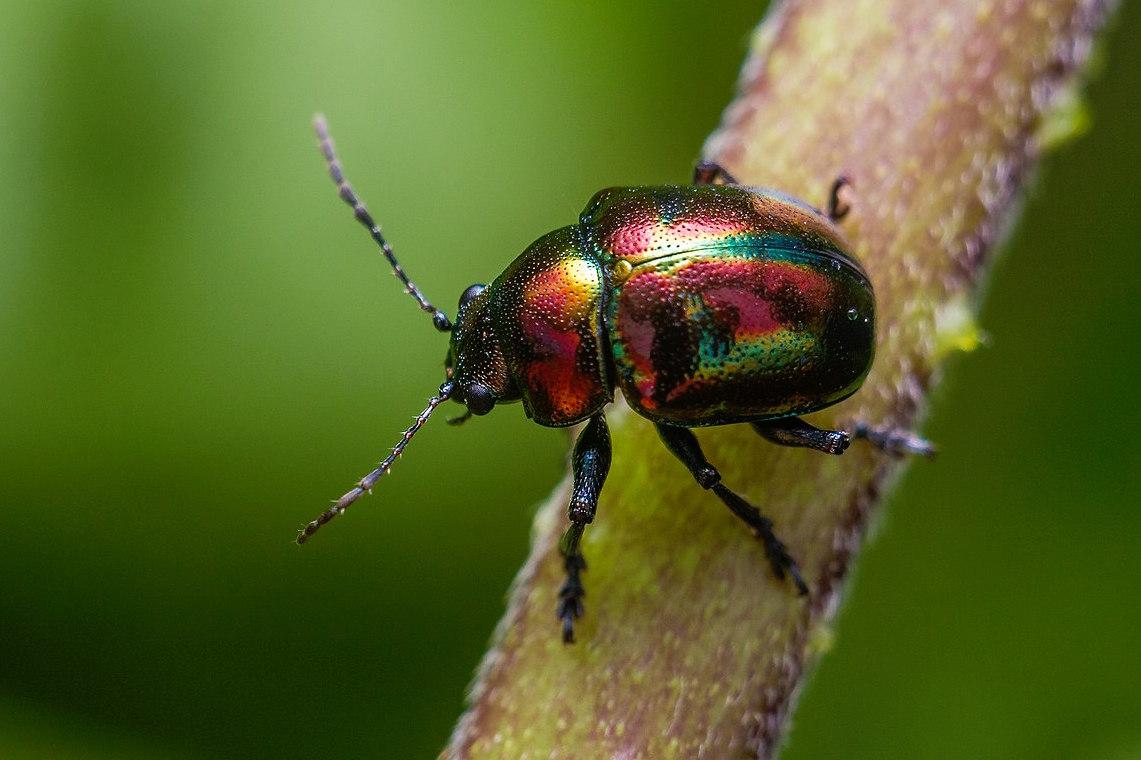D: Yaël, have you ever noticed the beautiful shiny carapaces of some beetles. They look like metal, or a jewel.
Y: That shininess is called iridescence, Don. It’s caused when tiny structures in the carapace interfere with certain wavelengths of light, so that different colors are seen from different angles. It’s actually fairly common in insects, and the feathers of some birds, too.
D: Do beetles use the bright shiny colors to attract a mate?
Y: No, because in most species iridescence is found in both sexes and during non-reproductive stages of the insect’s life.
D: But why would an animal stand out like that? Monarch butterflies have bright colors that warn potential predators that they are poisonous. Could iridescence be this kind of warning?
Y: No, because most iridescent beetles aren’t poisonous. But a team of British biologists have surprising evidence that iridescence actually functions as an effective form of camouflage. The first clue came when the researchers showed that iridescence confused the abilities of bumblebees to recognize objects.
D: The best experiment would be to test whether predators are better at finding iridescent or non-iridescent targets.
Y: They did that next. They took the wing cases of iridescent and non-iridescent beetles and baited them with a tasty mealworm. They put out more than eight hundred targets like this in a wooded area. Birds found and ate eighty-five percent of the non-iridescent targets, but only sixty percent of the iridescent ones. Humans also found the iridescent targets harder to find. The iridescent targets were especially hard to find on glossy leaves.
D: So, as unlikely as it may seem, iridescence is an effective form of camouflage.









